Article
Mastering Outlook: A Guide to Finding Attachments and Setting Email Signatures
These simple functions will help you to save precious time using Outlook
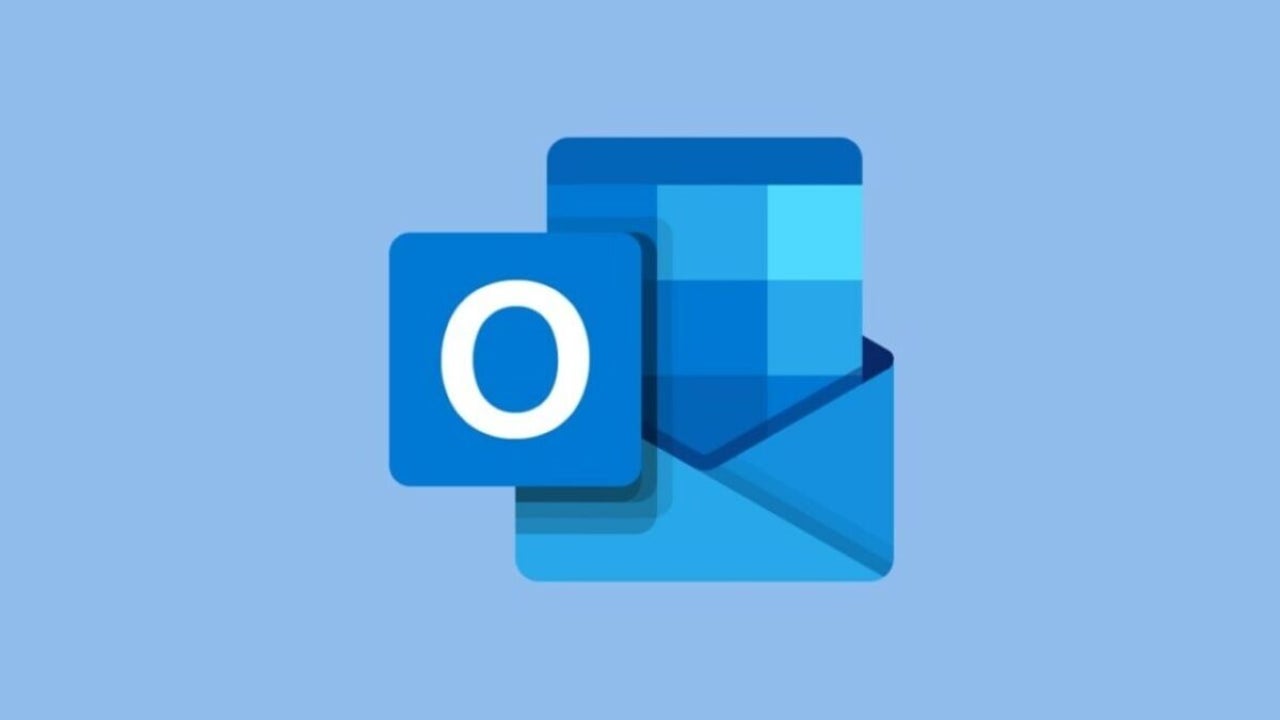
- June 5, 2023
- Updated: July 2, 2025 at 2:01 AM

Microsoft Outlook is one of the most widely used email managers worldwide. In addition to its email capabilities, its integration with other services like Microsoft 365 and Teams makes it essential for maximizing productivity during your work hours. However, it’s common to overlook some of its basic functions at times. Have you ever tried unsuccessfully to find an attachment in Outlook? Unsure how to add a signature in Outlook? You’ve come to the right place.
In today’s article, we will show you how to find attachments and add a signature in Outlook. Despite being basic functions, they are not always intuitive but are incredibly useful. Just follow these steps.
How to find attachments in Outlook
On a daily basis, we receive hundreds of emails, many of which contain attachments. Photographs, Excel files, reports, text documents… There are all kinds of attachments! It’s common for us to struggle to find and download these attachments if we’re not very organized or don’t have a well-established folder system. Fortunately, Outlook provides functions that can help us locate these files. Below, we will explain how to do this in both the desktop version of Outlook and its mobile app.
From its PC version:
Finding data and attachments in Outlook is very straightforward. First, if you have your emails organized into folders, click on the folder where your attachment should be. Otherwise, click on the inbox to display files from your entire email account. Then, select the “Search” option.
At the top of Outlook, you will find the email search bar. Type “hasattachments:yes” and press Enter. This will display all the messages in your mailbox or selected folder that have attachments. The messages will be listed in chronological order, from the most recent to the oldest. If you still can’t find the desired email, we recommend using Outlook’s filtering system.

From its mobile version:
If you are a user of the mobile version of Outlook, you can quickly find attachments by following these steps. First, tap on the “Search” icon located at the bottom of the screen and select the “Files” option. You will then see a list of your contacts, so choose the contact who sent you the attachment. It’s as simple as that!
Alternatively, you can use the “Search” bar and select the “Attachments” slider. This will display a list of all the messages that contain some type of attachment. Tap on the message you’re looking for to open or download the attachment to your device.
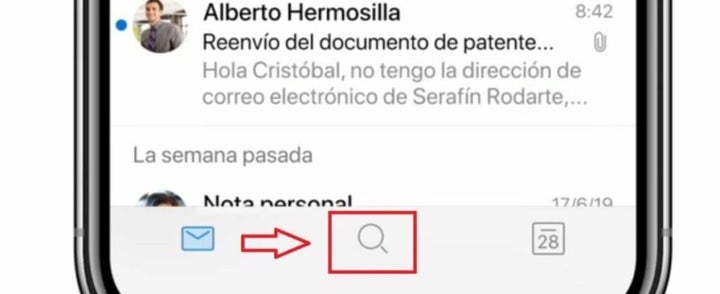
How to set a signature in Outlook
Like any reputable email client, Outlook includes a feature to add an automatic signature to all of our emails. This signature will appear at the bottom of each of our emails, saving us a lot of time if you are someone who still writes it manually and giving our emails a more professional appearance.
To add a signature in Outlook, simply follow these steps:
Step 1. Access the Signatures menu
To add a new signature in Outlook, first, you need to access the signature menu. To do this, select the “Message” tab, followed by “Signature”. This will open a drop-down menu where you should click on “Signatures”.

Step 2. Create a new signature
Once you are in the signature menu, select the “New” option, followed by “New Signature”. Then, choose a name for your signature.
Within the editing window, you can create your signature. Type the desired text inside the “Edit signature” box. Remember, you can change the font, size, color, and style of your text. You can also download Word templates, customize them, copy them, and add them to your signature.
To add logos or images to your signature, click on the “Image” icon (located next to “Business Card”), and select the file you want to insert. All the images in your signature can be edited and resized directly within the editor. Once the image appears as you want it to, select the “Lock Aspect Ratio” option.
Once you have finished the process, click on the “Accept” button.
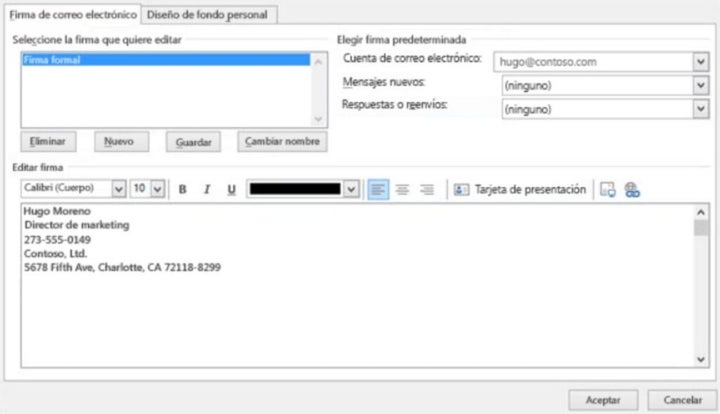
Step 3. Choose a default signature
Now that you know how to create a signature, it’s time to choose the one you want to set as the default. To do this, open the “Email Account” dropdown menu and choose the account you want to associate with your signature. You will find this menu in the top right corner of the window.
If you want your signature to appear in all new messages, open the “New Messages” dropdown menu and select the name of the signature you want to use. If, on the other hand, you only want it to appear in replies or forwards, click on “Replies/Forwards” and select the name of the created signature.
To save all the changes, click on the “Accept” button.
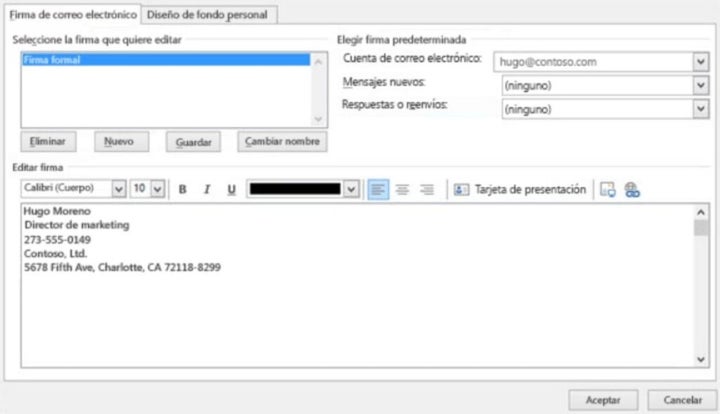
How to insert the signature manually
If you don’t want to have a default signature and only add it to specific emails, you can also insert it manually. To do this, compose your email and click on the “Message” tab, then choose the “Signature” option. After that, select the name of the signature from the drop-down menu, and it will appear at the bottom of your email.
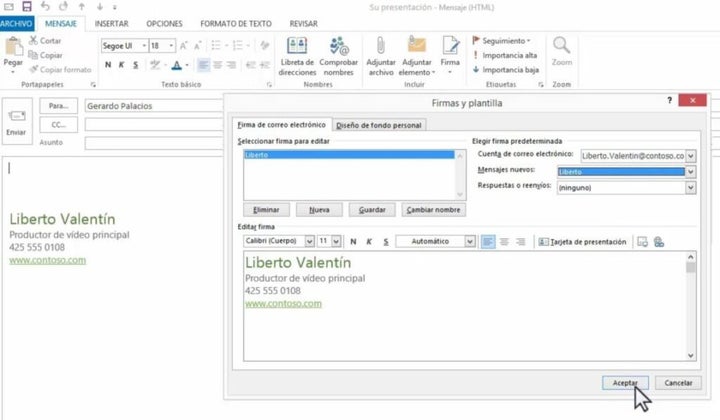
Get the most out of Outlook
We hope this article has helped you in finding attachments and setting up a signature in Outlook. As you can see, these are simple functions that, once you know how to use them, will save you valuable time.
Did you enjoy what you read? Don’t forget to share it with your friends on social media!
Mireia Fernández is passionate about the world of video games and new technologies, a hobby that dates back to her childhood with the MSX HB 501p. Born and residing in Barcelona, Mireia has been working as an editor for over 10 years and specializes in writing reviews, tutorials, and software guides, as well as doing everything possible to publish news before anyone else. Her hobbies include spending hours playing on her console, walking her golden retriever, and keeping up with the latest SEO developments.
Latest from Mireia Fernández
- A Greener Web and Cleaner Oceans: Why So Many Are Switching to Wave Browser
- Fuel Your Instagram Feed: How Adobe Stock’s Infinite Library Powers Your Creativity
- Agentic AI in Adobe Express: Will Conversational Editing Change 2026 Content Creation?
- Gmail Help Me Write with Gemini: 7 Ready-to-Use Prompts for Complaints, Sales & Internal Memos
You may also like
 Article
ArticleA Greener Web and Cleaner Oceans: Why So Many Are Switching to Wave Browser
Read more
 News
NewsThe Worst of CES: AI takes the worst of these devices, according to experts
Read more
 News
NewsGerard Butler has just released the sequel to his 2020 action movie
Read more
 News
NewsDonald Trump has given the green light to cybercriminals (and you probably haven't noticed)
Read more
 News
NewsDisney+ is already experimenting with vertical video, and it's not the only one
Read more
 News
NewsNeither a remake nor a reboot: the new 'Buffy the Vampire Slayer' is a continuation of the original
Read more